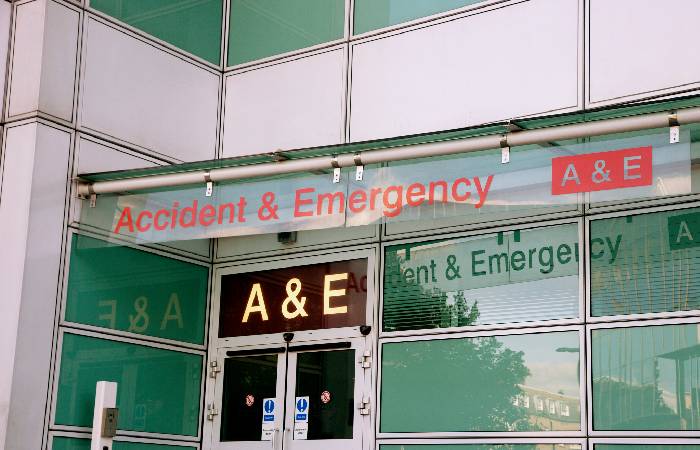Opinion BMJ 2025; 389 doi: https://doi.org/10.1136/bmj.r1233 (Published 13 June 2025) Cite this as: BMJ 2025;389:r1233
Patients don’t always present with cases that fall neatly into “mental” or “physical” boxes, writes James Downs
I wanted to feel optimistic when the NHS recently announced that it will be opening specialist mental health centres as an alternative to A&E for people experiencing a mental health crisis.1 Anyone who’s ever sought help in a hospital during a psychiatric crisis—as I have—knows that emergency departments can feel overwhelming, inappropriate, and even traumatising. A quieter, more compassionate space, staffed by people who are trained to support patients in distress, sounds like progress.
But this approach could have unintended consequences. Psychiatric emergencies are often medical emergencies too, and creating separate mental health crisis centres could end up reinforcing the divide between physical and mental illness that we should be focused on dismantling.
I've turned up to A&E before because my heart was racing to the point of collapse, or my potassium levels had dropped so low that I was at risk of cardiac arrest. The root cause? My eating disorder—a psychiatric illness. Sometimes I didn’t even know that my life was in danger. It took trained medical staff, blood tests, ECGs, and an understanding of how mental illness affects the body to work all this out.
I’m not alone. Psychiatric crises are often accompanied by, and can mask, an urgent risk to physical health. People with a mood disorder taking medications such as lithium can develop toxicity, which can be fatal if missed.2 A person in acute psychosis might have an undiagnosed infection, head trauma, delirium, or substance use or withdrawal.3 Postpartum psychosis is a psychiatric condition, but it can unfold in the midst of other life-threatening complications after childbirth.45 People who self harm will have both physical and psychological wounds.
It’s a common reality for patients to present with cases that don’t fall neatly into “mental” or “physical” boxes, and they shouldn’t be met with a service that recognises only one half of the picture. I fear that, in trying to provide an alternative to the emergency department, we risk missing medical emergencies.
Perhaps most worryingly, the creation of separate mental health crisis centres risks reinforcing the harmful idea that psychiatric emergencies are somehow less real or less urgent than physical ones. When I was referred by the NHS 111 service to a crisis “sanctuary” instead of A&E, the threat that my paranoid delusions posed to my life wasn’t recognised and escalated. I avoided the distress of visiting the hospital that evening, and the person I spoke to was kind and empathetic, but they weren’t able to appropriately assess or respond to my needs, leaving me without access to treatment. It’s vital that these new crisis centres are staffed by people who are equipped to manage risk and can match emotional support with medical capability. It’s also critical that staff in A&E still see mental illness as an important part of their role, so that they’re able to provide holistic care for patients.
For too long, our healthcare system has operated on a false binary that cleanly separates the mind and body: judging physical illness to be medical and urgent, while mental illness is viewed as emotional, less serious, and somehow outside of the body. Recent public and political discourse has focused on the overdiagnosis of mental illness and hypothesised that it’s often conflated with normal life problems,6 but I’d argue this narrative misses the current crisis in the provision of mental health care. In the more than two decades that I have been a patient, I’ve seen psychiatry stripped of inpatient beds, lose community resources, and become increasingly fragmented and inaccessible to patients who need specialist care.78
One of the main arguments I hear in support of these crisis centres is that “A&E is a terrible place for people with mental illness.” Often, that’s true. But that doesn’t mean A&E has to be a terrible place and can’t ever be improved. We should be looking at why our emergency departments are failing to meet the needs of patients in crisis, and how we can transform them.
A&E should be better for everyone, not just for people in psychiatric crisis. Improving A&E for people with a mental illness would help to improve care for all patients, including older people with complex needs, people in pain and distress, and those waiting hours to be seen. Spacious and calm facilities, trauma-informed care, skilled de-escalation, and integrated medical-psychiatric knowledge should be standard components of care for all patients, not a specialist add-on.
That doesn’t mean there’s no place for new models of support, but we must be cautious of the idea that people in a mental health crisis can simply be diverted elsewhere. The answer doesn’t lie in carving up care in ways that allow people to keep falling through the cracks. Instead, it is in joined-up care that upholds the promised parity of esteem between mental and physical health we are still waiting to see.








